How to Hook up an Equalizer
Method 1 of 5:
Hooking Up an Equalizer Between Your Receiver and Amplifier
-
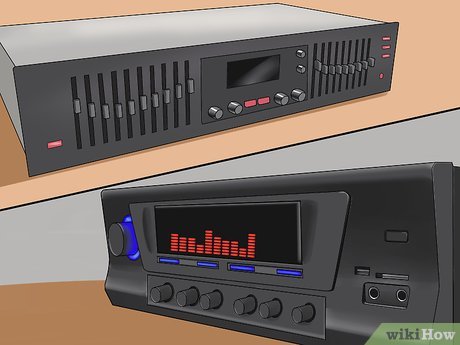 Connect the equalizer to your receiver for the easiest connection. Most receivers have either preamp-in and preamp-out connections or tape monitor connections. In most cases, these are the best way to connect an equalizer to your stereo.
Connect the equalizer to your receiver for the easiest connection. Most receivers have either preamp-in and preamp-out connections or tape monitor connections. In most cases, these are the best way to connect an equalizer to your stereo.- Connecting to the tape monitor channels will require connection to only your receiver. Learn how to hook up an equalizer to the receiver instead.
-
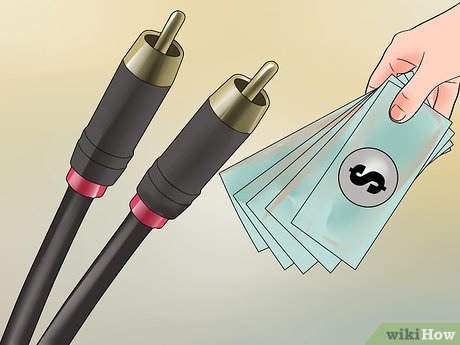 Purchase 2 pairs of RCA cables. To run a signal from your stereo receiver to the equalizer and then to your amplifier, you will need 2 sets of RCA cable (the same kind that is usually used to connect source components like turntables and CD players).
Purchase 2 pairs of RCA cables. To run a signal from your stereo receiver to the equalizer and then to your amplifier, you will need 2 sets of RCA cable (the same kind that is usually used to connect source components like turntables and CD players).- The length of the RCA cables should match the length of the distance between the receiver and the equalizer.
-
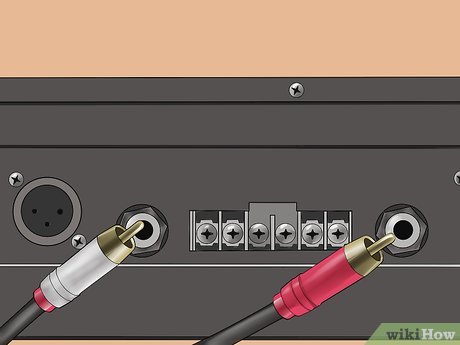 Connect one pair of RCA cables between the receiver and equalizer. Connect one pair of cables to the pre-amp output channels on the receiver and the other end of the cable to the left and right channel inputs on the equalizer.
Connect one pair of RCA cables between the receiver and equalizer. Connect one pair of cables to the pre-amp output channels on the receiver and the other end of the cable to the left and right channel inputs on the equalizer.- You will usually find these channels on the rear of the equalizer.
- Right channel jacks will usually take the red colored RCA plug while left channel should take white or black RCA plugs.
-
 Connect the other pair of RCA cables between the receiver and amplifier. Connect the other pair of cables from the output channels on the back of the equalizer to the left and right input channels on the amplifier.
Connect the other pair of RCA cables between the receiver and amplifier. Connect the other pair of cables from the output channels on the back of the equalizer to the left and right input channels on the amplifier.- Right channel jacks will usually take the red colored RCA plug while left channel should take white or black RCA plugs.
-
 Connect the amp to the receiver. The amplifier should remain connected to the receiver with an RCA cable between the amplifier outputs and the amp inputs on the receiver. This effectively creates a loop from the receiver through the equalizer and amplifier and back to the receiver.
Connect the amp to the receiver. The amplifier should remain connected to the receiver with an RCA cable between the amplifier outputs and the amp inputs on the receiver. This effectively creates a loop from the receiver through the equalizer and amplifier and back to the receiver. -
 Turn on the receiver, equalizer and amplifier to use your equalizer. Turn on all three components and adjust the equalizer knobs according to your preferences. You should now be able to manipulate the controls on the equalizer to change the frequency response or tone of your music.
Turn on the receiver, equalizer and amplifier to use your equalizer. Turn on all three components and adjust the equalizer knobs according to your preferences. You should now be able to manipulate the controls on the equalizer to change the frequency response or tone of your music.
Method 2 of 5:
Hooking Up an Equalizer to Your Receiver
-
 Hook up your equalizer to your receiver if it does not have preamp-out channels. The equalizer should always be between the receiver and the amplifier. Your amplifier will need integrated preamp-out and preamp-in connections to work with this method.
Hook up your equalizer to your receiver if it does not have preamp-out channels. The equalizer should always be between the receiver and the amplifier. Your amplifier will need integrated preamp-out and preamp-in connections to work with this method. -
 Purchase 2 pairs of RCA cables. To run a signal from your stereo receiver to the equalizer and back again, you'll need 2 sets of RCA cable (the same kind that is usually used to connect source components like turntables and CD players).
Purchase 2 pairs of RCA cables. To run a signal from your stereo receiver to the equalizer and back again, you'll need 2 sets of RCA cable (the same kind that is usually used to connect source components like turntables and CD players).- The length of the RCA cables should match the length of the distance between the receiver and the equalizer.
-
 Connect one pair of RCA cables between the receiver and equalizer. Connect one pair of cables to the tape monitor output channels on the receiver and the other end of the cable to the left and right channel inputs on the equalizer.
Connect one pair of RCA cables between the receiver and equalizer. Connect one pair of cables to the tape monitor output channels on the receiver and the other end of the cable to the left and right channel inputs on the equalizer.- You will usually find these channels on the rear of the equalizer.
-
 Connect the other pair of RCA cables between the receiver and equalizer. Connect the other pair of cables from the output channels on the back of the equalizer to the tape monitor input channels on the back of the receiver.
Connect the other pair of RCA cables between the receiver and equalizer. Connect the other pair of cables from the output channels on the back of the equalizer to the tape monitor input channels on the back of the receiver.- Right channel jacks will usually take the red colored RCA plug while left channel should take white or black RCA plugs.
-
 Use your equalizer. Turn on the receiver and switch the front panel output control to the 'Tape Monitor' setting. This opens the tape monitor channels and means that the sound will travel through your equalizer before being sent to the amplifier. Adjust the equalizer knobs according to your preferences.
Use your equalizer. Turn on the receiver and switch the front panel output control to the 'Tape Monitor' setting. This opens the tape monitor channels and means that the sound will travel through your equalizer before being sent to the amplifier. Adjust the equalizer knobs according to your preferences.- You should now be able to manipulate the controls on the equalizer to change the frequency response or tone of your music.
- To switch on the 'Tape Monitor' setting you should depress the button on the front panel of the equalizer.
- If you have a tape deck connected to the tape monitor channels then you will have to remove this before connecting your equalizer.
Method 3 of 5:
Connecting an Equalizer Directly to an Amplifier
-
 Connect the equalizer directly to your amplifier if your receiver does not have preamp-output channels or tape monitor channels but your amplifier has preamp-in and out channels. Most receivers have either preamp-in and preamp-out connections or tape monitor connections. In most cases, these are the best way to connect an equalizer to your stereo. However, if your receiver does not have these channels then some amplifiers allow you to connect the equalizer directly.
Connect the equalizer directly to your amplifier if your receiver does not have preamp-output channels or tape monitor channels but your amplifier has preamp-in and out channels. Most receivers have either preamp-in and preamp-out connections or tape monitor connections. In most cases, these are the best way to connect an equalizer to your stereo. However, if your receiver does not have these channels then some amplifiers allow you to connect the equalizer directly.- Connecting to the amplifier directly will require preamp-in and preamp-out channels on your amplifier.
-
 Purchase 2 pairs of RCA cables. To run a signal from your equalizer to the amplifier and back again, you'll need 2 sets of RCA cable (the same kind that is usually used to connect source components like turntables and CD players).
Purchase 2 pairs of RCA cables. To run a signal from your equalizer to the amplifier and back again, you'll need 2 sets of RCA cable (the same kind that is usually used to connect source components like turntables and CD players).- The length of the RCA cables should match the length of the distance between the receiver and the equalizer.
-
 Connect one pair of RCA cables between the equalizer and amplifier. Connect one pair of cables to the pre-amp output channels on the amplifier and the other end of the cable to the pre-amp input channels on the equalizer.
Connect one pair of RCA cables between the equalizer and amplifier. Connect one pair of cables to the pre-amp output channels on the amplifier and the other end of the cable to the pre-amp input channels on the equalizer.- You will usually find these channels on the rear of the equalizer.
- Right channel jacks will usually take the red colored RCA plug while left channel should take white or black RCA plugs.
- Sometimes the amplifier channels will say tape monitor output rather than pre-amp output so you can also use these.
-
 Connect the other pair of RCA cables between the amplifier and receiver. Connect the other pair of cables from the output channels on the back of the equalizer to the pre-amp input channels on the amplifier.
Connect the other pair of RCA cables between the amplifier and receiver. Connect the other pair of cables from the output channels on the back of the equalizer to the pre-amp input channels on the amplifier.- Right channel jacks will usually take the red colored RCA plug while left channel should take white or black RCA plugs.
- Some amplifiers might have tape monitor input rather than pre-amp input channels so you can also use these.
-
 Switch on the pre-amp connection on the amplifier. Some amplifiers will have a switch to turn on the pre-amp connections. If you are using tape monitor channels then you will also need to switch on the tape monitor switch. Depress the button to turn on this connection.
Switch on the pre-amp connection on the amplifier. Some amplifiers will have a switch to turn on the pre-amp connections. If you are using tape monitor channels then you will also need to switch on the tape monitor switch. Depress the button to turn on this connection. -
 Turn on the receiver, equalizer and amplifier to use your equalizer. Turn on all three components and adjust the equalizer knobs according to your preferences. You should now be able to manipulate the controls on the equalizer to change the frequency response or tone of your music.
Turn on the receiver, equalizer and amplifier to use your equalizer. Turn on all three components and adjust the equalizer knobs according to your preferences. You should now be able to manipulate the controls on the equalizer to change the frequency response or tone of your music.
Method 4 of 5:
Connecting a Remote-Mount Equalizer to Your Car
-
 Use this method to connect an equalizer to your car stereo in a remote location for additional space. Some equalizers are designed for installation in your dash while others are designed for a remote location such as the trunk. The installation location will depend on your particular choice of equalizer and preferences.
Use this method to connect an equalizer to your car stereo in a remote location for additional space. Some equalizers are designed for installation in your dash while others are designed for a remote location such as the trunk. The installation location will depend on your particular choice of equalizer and preferences.- Many prefer to install their equalizers in their trunk near the amp so that they have the option to easily add additional amps later.
- Some vehicles will not have space in the dash for an equalizer and will need to remote-mount their equalizer.
- Equalizers can be installed anywhere between your amp and receiver.
- Most remote-mount equalizers will come with a remote so that you can change the controls from the driver's seat.
-
 Decide where you would like to mount the equalizer. Most people prefer to mount their remote-mount equalizer in their trunk near the amp. This way they can easily add additional amps later on by connecting a close wire. Other possible locations include under a seat in the vehicle.
Decide where you would like to mount the equalizer. Most people prefer to mount their remote-mount equalizer in their trunk near the amp. This way they can easily add additional amps later on by connecting a close wire. Other possible locations include under a seat in the vehicle.- Remember that wherever you mount your equalizer, you will have to run wires to your head unit, or receiver, and amplifier.
-
 Purchase 2 pairs of RCA cables. To run a signal from your stereo receiver to the equalizer and back again, you'll need 2 sets of RCA cable (the same kind that is usually used to connect source components like turntables and CD players).
Purchase 2 pairs of RCA cables. To run a signal from your stereo receiver to the equalizer and back again, you'll need 2 sets of RCA cable (the same kind that is usually used to connect source components like turntables and CD players).- The length of the RCA cables should match the length of the distance between the receiver and the equalizer.
-
 Remove your receiver from the dash. Remove your receiver from the dash so that you can access the wires behind. Usually you can pull off the plastic piece covering the dash and then pull the receiver slightly out.
Remove your receiver from the dash. Remove your receiver from the dash so that you can access the wires behind. Usually you can pull off the plastic piece covering the dash and then pull the receiver slightly out. -
 Connect the RCA cables to your in-dash receiver. Plug the two RCA cables into the receiver's preamp outputs. Tape them together so they will not come apart.
Connect the RCA cables to your in-dash receiver. Plug the two RCA cables into the receiver's preamp outputs. Tape them together so they will not come apart. -
 Bring the cables to the equalizer and plug in. Route the cables through the dash to the equalizer. You should use tape or wire ties along the way to connect the two cables together. Plug the cables into the preamp inputs on your equalizer.[1]
Bring the cables to the equalizer and plug in. Route the cables through the dash to the equalizer. You should use tape or wire ties along the way to connect the two cables together. Plug the cables into the preamp inputs on your equalizer.[1] -
 Mount your equalizer to the vehicle. Do not mount your equalizer directly to the metal chassis. This will interfere with the sound. It is better to mount the equalizer on a platform or some kind of rubber material to prevent interference.
Mount your equalizer to the vehicle. Do not mount your equalizer directly to the metal chassis. This will interfere with the sound. It is better to mount the equalizer on a platform or some kind of rubber material to prevent interference.- If you must bolt the equalizer directly to the metal chassis, then you should use rubber pieces between the equalizer and the vehicle.
-
 Turn off your ignition. Turn off your ignition completely and remove your keys before you begin installation. This is for your safety while you connect the wires to avoid getting shocked.
Turn off your ignition. Turn off your ignition completely and remove your keys before you begin installation. This is for your safety while you connect the wires to avoid getting shocked. -
 Connect your ground wire. On your equalizer you will see three wires. The black one is the ground wire. Remove a bolt near the equalizer mounting location and scrape away any paint covering the location around the bolt. Crimp a ring on the end of the wire and bolt this to the vehicle.
Connect your ground wire. On your equalizer you will see three wires. The black one is the ground wire. Remove a bolt near the equalizer mounting location and scrape away any paint covering the location around the bolt. Crimp a ring on the end of the wire and bolt this to the vehicle.- If there is no location available then you will have to drill a hole in the chassis. Be very careful not to damage the gas tank or brake line while doing this.
-
 Connect the power cable. The yellow wire (could be red or another color- check your manual) on your equalizer is the 12V power cable. Connect this cable either to the power cable attached to the receiver or to a 12V variable power source in the fuse box (such as the wiper fuse).
Connect the power cable. The yellow wire (could be red or another color- check your manual) on your equalizer is the 12V power cable. Connect this cable either to the power cable attached to the receiver or to a 12V variable power source in the fuse box (such as the wiper fuse).- If your receiver does not have a wiring diagram to show which wires are switched power cables, then you should use a digital multimeter to identify the correct cable. Connect the multimeter to the cable when the key is in the off position and make sure the voltage reads at zero. Then turn the key into the on position and see if there is now 12V. If the wire follows this pattern then you have found the correct switched 12V power wire.
- Splice the wires together and wrap the exposed metal with electrical tape completely. This prevents the exposed areas from touching other wires and potentially shorting the system.
- You can also crimp the wires together but this is not as strong as splicing.
- This wire will need to be routed from the receiver to wherever the equalizer is mounted.
-
 Connect the remote turn-on wire. This wire will usually be a blue wire with a white stripe, and should be labeled on your equalizer. On the receiver should be a blue (usually blue but can be other colors) wire that goes to the amplifier. Connect this wire to the blue wire on the receiver after routing it through the vehicle from where the equalizer is located.
Connect the remote turn-on wire. This wire will usually be a blue wire with a white stripe, and should be labeled on your equalizer. On the receiver should be a blue (usually blue but can be other colors) wire that goes to the amplifier. Connect this wire to the blue wire on the receiver after routing it through the vehicle from where the equalizer is located.- Splice or crimp the wires together to make a connection and then wrap the connection in electrical tape.
-
 Test the equalizer by turning on the car. Put the key in the ignition and turn it to the 'on' position. Then turn on the radio to check that everything is working well and that the equalizer turns on with the radio.
Test the equalizer by turning on the car. Put the key in the ignition and turn it to the 'on' position. Then turn on the radio to check that everything is working well and that the equalizer turns on with the radio. -
 Replace the receiver. Put the receiver back into its bracket and place the frame covering back into place. Be sure all the wiring is pushed inside the dash beforehand.
Replace the receiver. Put the receiver back into its bracket and place the frame covering back into place. Be sure all the wiring is pushed inside the dash beforehand.
Method 5 of 5:
Connecting an In-Dash Equalizer to Your Car
-
 Use this method to connect an equalizer to your car stereo in the dash if you want easy access to the controls. Some equalizers are designed to for installation in your dash while others are designed for a remote location such as the trunk. The installation location will depend on your particular choice of equalizer and preferences.
Use this method to connect an equalizer to your car stereo in the dash if you want easy access to the controls. Some equalizers are designed to for installation in your dash while others are designed for a remote location such as the trunk. The installation location will depend on your particular choice of equalizer and preferences.- Many prefer to install their equalizers in the dash of the vehicle so that they can have access to the controls continuously.
- Equalizers can be installed anywhere between your amp and receiver.
-
 Decide where you would like to install the equalizer. The best place to install an in-dash equalizer is right above or below your head unit, or stereo control unit. Some vehicles will have space for this in their dash. Other vehicles will not have space and the equalizer can then be mounted under the dash. The final option is to custom-fit your equalizer into the dash.
Decide where you would like to install the equalizer. The best place to install an in-dash equalizer is right above or below your head unit, or stereo control unit. Some vehicles will have space for this in their dash. Other vehicles will not have space and the equalizer can then be mounted under the dash. The final option is to custom-fit your equalizer into the dash.- If you have space in your dash, then you will simply need an installation kit to mount your equalizer. These kits are brackets that hold the head unit to the dash and require only a few screws to attach. Your kit will come with particular instructions for mounting.
- If you do not have space in your dash you will need an under-dash mounting kit. These kits are usually designed for under the dash on the driver's side although other options are available. There are many different designs for under-dash kits so choose on that you prefer and works well with your vehicle.
- If you would like to have a custom install then it is best to leave the job to a professional audio installer.
-
 Purchase 2 pairs of RCA cables. To run a signal from your stereo receiver to the equalizer and back again, you'll need 2 sets of RCA cable (the same kind that is usually used to connect source components like turntables and CD players).
Purchase 2 pairs of RCA cables. To run a signal from your stereo receiver to the equalizer and back again, you'll need 2 sets of RCA cable (the same kind that is usually used to connect source components like turntables and CD players).- The length of the RCA cables should match the length of the distance between the receiver and the equalizer. To avoid "cable clutter," it's best to buy "patch" size cables, which are only about a foot (30 cm) in length.
-
 Remove your receiver from the dash. Remove your receiver from the dash so that you can access the wires behind. Usually you can pull off the plastic piece covering the dash and then pull the receiver slightly out.
Remove your receiver from the dash. Remove your receiver from the dash so that you can access the wires behind. Usually you can pull off the plastic piece covering the dash and then pull the receiver slightly out. -
 Connect the RCA cables to your in-dash receiver. Plug the two RCA cables into the receiver's preamp outputs. Tape them together so they will not come apart.
Connect the RCA cables to your in-dash receiver. Plug the two RCA cables into the receiver's preamp outputs. Tape them together so they will not come apart. -
 Bring the cables to the equalizer and plug in. Route the cables through the dash to the equalizer. You should use tape or wire ties along the way to connect the two cables together. Plug the cables into the preamp inputs on your equalizer.
Bring the cables to the equalizer and plug in. Route the cables through the dash to the equalizer. You should use tape or wire ties along the way to connect the two cables together. Plug the cables into the preamp inputs on your equalizer. -
 Mount your equalizer. Mount your equalizer to whichever location you have chosen. You will simply need to attach a few screws in order to mount your equalizer.
Mount your equalizer. Mount your equalizer to whichever location you have chosen. You will simply need to attach a few screws in order to mount your equalizer. -
 Turn off your ignition. Turn off your ignition completely and remove your keys before you begin installation. This is for your safety while you connect the wires to avoid getting shocked.
Turn off your ignition. Turn off your ignition completely and remove your keys before you begin installation. This is for your safety while you connect the wires to avoid getting shocked. -
 Connect your ground wire. On your equalizer you will see three wires. The black one is the ground wire. On the back of the receiver will also be a black ground wire and you should splice (or crimp) these wires together. After making the connection, wrap it in electrical tape.
Connect your ground wire. On your equalizer you will see three wires. The black one is the ground wire. On the back of the receiver will also be a black ground wire and you should splice (or crimp) these wires together. After making the connection, wrap it in electrical tape.- If you cannot find a black wire on the receiver, remove a bolt near the equalizer mounting location and scrape away any paint covering the location around the bolt. Crimp a ring on the end of the wire and bolt this to the vehicle.
- If there is no location available then you will have to drill a hole in the chassis. Be very careful not to damage the gas tank or brake line while doing this.
-
 Connect the power cable. The yellow wire (could be red or another color- check your manual) on your equalizer is the 12V power cable. Connect this cable either to the power cable attached to the receiver or to a 12V variable power source in the fuse box (such as the wiper fuse).
Connect the power cable. The yellow wire (could be red or another color- check your manual) on your equalizer is the 12V power cable. Connect this cable either to the power cable attached to the receiver or to a 12V variable power source in the fuse box (such as the wiper fuse).- If your receiver does not have a wiring diagram to show which wires are switched power cables, then you should use a digital multimeter to identify the correct cable. Connect the multimeter to the cable when the key is in the off position and make sure the voltage reads at zero. Then turn the key into the on position and see if there is now 12V. If the wire follows this pattern then you have found the correct switched 12V power wire.
- Splice the wires together and wrap the exposed metal with electrical tape completely. This prevents the exposed areas from touching other wires and potentially shorting the system.
- You can also crimp the wires together but this is not as strong as splicing.
- This wire will need to be routed from the receiver to wherever the equalizer is mounted.
-
 Connect the remote turn-on wire. This wire will usually be a blue wire with a white stripe, and should be labeled on your equalizer. On the receiver should be a blue (usually blue but can be other colors) wire that goes to the amplifier. Connect this wire to the blue wire on the receiver after routing it through the vehicle from where the equalizer is located.
Connect the remote turn-on wire. This wire will usually be a blue wire with a white stripe, and should be labeled on your equalizer. On the receiver should be a blue (usually blue but can be other colors) wire that goes to the amplifier. Connect this wire to the blue wire on the receiver after routing it through the vehicle from where the equalizer is located.- Splice or crimp the wires together to make a connection and then wrap the connection in electrical tape.[2]
-
 Test the equalizer by turning on the car. Put the key in the ignition and turn it to the 'on' position. Then turn on the radio to check that everything is working well and that the equalizer turns on with the radio.
Test the equalizer by turning on the car. Put the key in the ignition and turn it to the 'on' position. Then turn on the radio to check that everything is working well and that the equalizer turns on with the radio. -
 Replace the receiver. Put the receiver back into its bracket and place the frame covering back into place. Be sure all the wiring is pushed inside the dash beforehand.
Replace the receiver. Put the receiver back into its bracket and place the frame covering back into place. Be sure all the wiring is pushed inside the dash beforehand.
4.3 ★ | 7 Vote
You should read it
- How to Install an Equalizer
- How to Connect a Vizio Soundbar to a TV
- 5 best equalizer software for Windows 10 to improve PC sound
- How to turn on and use Groove Music Equalizer in Windows 10
- How to Connect VCR to TV
- Connect 2 Windows XP laptops without cables
- How to adjust Equalizer on iPhone and iPad
- How to Connect Macbook Pro to TV
May be interested
- Listen to better music on your iPhone / iPad by adjusting the music tone
 the following article will show you how to listen to better music on your iphone / ipad by adjusting the music tone.
the following article will show you how to listen to better music on your iphone / ipad by adjusting the music tone. - How to Filter the Vuvuzela Noise
 when you're tired of the world cup broadcast being a cacophony of vuvuzela, it's a relief to know that you can tone it down. here are some ways to drown out the drone. the benefit of this option despite having to fiddle a bit more is that...
when you're tired of the world cup broadcast being a cacophony of vuvuzela, it's a relief to know that you can tone it down. here are some ways to drown out the drone. the benefit of this option despite having to fiddle a bit more is that... - How to Transfer Video to DVD
 transferring video from vhs tapes to dvd will allow you to salvage the content on the tape before it degrades too much. you can also save physical space around the home by getting rid of your tapes once you copy them to dvd. there are...
transferring video from vhs tapes to dvd will allow you to salvage the content on the tape before it degrades too much. you can also save physical space around the home by getting rid of your tapes once you copy them to dvd. there are... - How to Hook Up a Trailer
 hooking up a trailer to your car or truck is an easy way to increase the storage capacity of your vehicle. however, failing to attach your trailer correctly can lead to damage to your own car, the trailer, and other vehicles around you as...
hooking up a trailer to your car or truck is an easy way to increase the storage capacity of your vehicle. however, failing to attach your trailer correctly can lead to damage to your own car, the trailer, and other vehicles around you as... - How to Use a Parametric Equalizer
 parametric equalizers are effective when shaping the tone of an audio signal. the controls allow for the user to be precise in selecting a frequency to boost or cut, which is helpful if the signal is feeding back or has an unpleasant...
parametric equalizers are effective when shaping the tone of an audio signal. the controls allow for the user to be precise in selecting a frequency to boost or cut, which is helpful if the signal is feeding back or has an unpleasant... - How to Adjust the Bass on a Computer
 this is an article on how to increase or decrease the bass of computer speakers. some windows computers have a built-in sound setting that allows you to add and customize an equalizer;
this is an article on how to increase or decrease the bass of computer speakers. some windows computers have a built-in sound setting that allows you to add and customize an equalizer; - First detected spyware attacking Mac OS X
 security experts have just discovered the first adware / spyware to attack apple computer's mac os x operating system. security firm f-secure said the malware could automatically install it on mac systems and hook it up.
security experts have just discovered the first adware / spyware to attack apple computer's mac os x operating system. security firm f-secure said the malware could automatically install it on mac systems and hook it up. - How to Hook up Jumper Cables
 your battery can be too weak to start your car for a number of reasons, including a loss of charge from cold weather, age, or leaving the lights on overnight. whatever the cause, you can use jumper cables to connect the dead battery to a...
your battery can be too weak to start your car for a number of reasons, including a loss of charge from cold weather, age, or leaving the lights on overnight. whatever the cause, you can use jumper cables to connect the dead battery to a... - How to Adjust Bass on a Computer
 this wikihow teaches you how to raise or lower the amount of bass in your computer's speaker output. some windows pcs have a built-in sound setting that allows you to add and customize an equalizer; however, on most windows computers and...
this wikihow teaches you how to raise or lower the amount of bass in your computer's speaker output. some windows pcs have a built-in sound setting that allows you to add and customize an equalizer; however, on most windows computers and... - How to Hook Up a Tow Dolly and Lights to a Car
 using a tow dolly is a great option for towing a vehicle without having to use a full-sized trailer. however, it's very important to ensure that both the tow dolly and lights are properly hooked up to the car before you begin towing. make...
using a tow dolly is a great option for towing a vehicle without having to use a full-sized trailer. however, it's very important to ensure that both the tow dolly and lights are properly hooked up to the car before you begin towing. make...
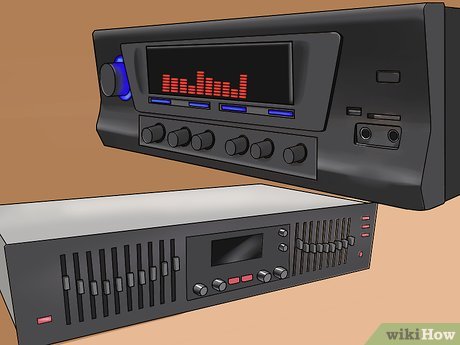
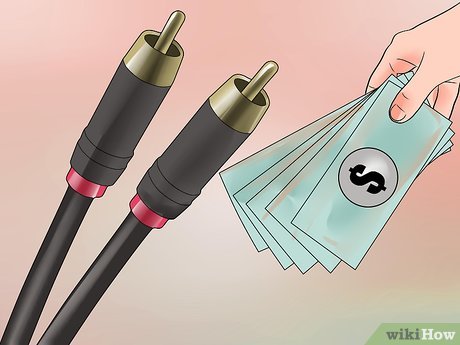
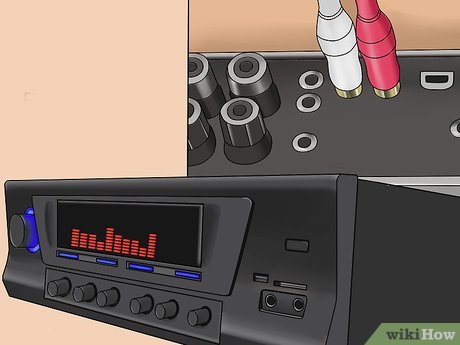
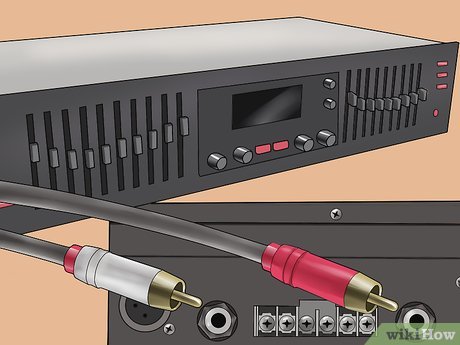
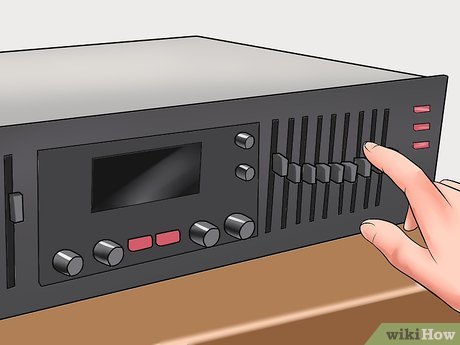
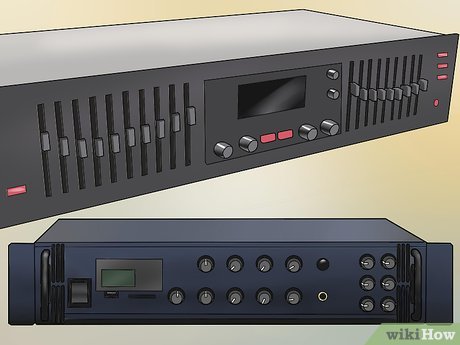
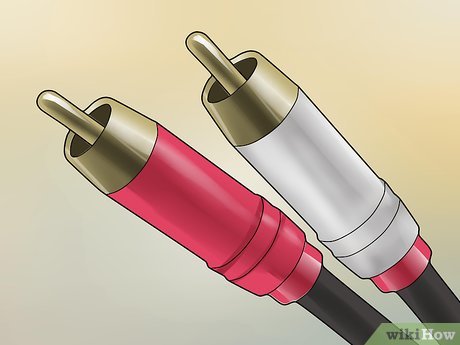
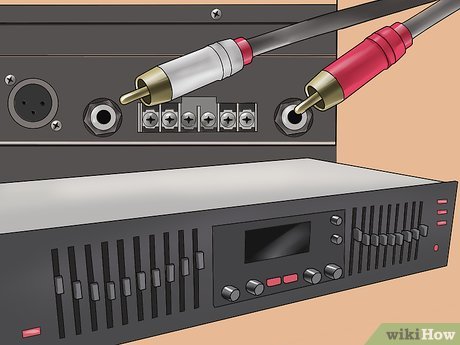
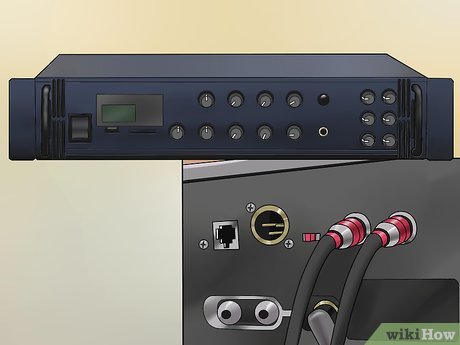
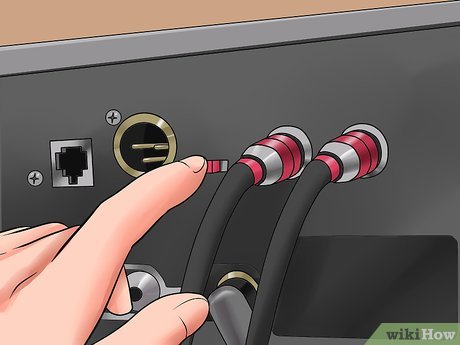
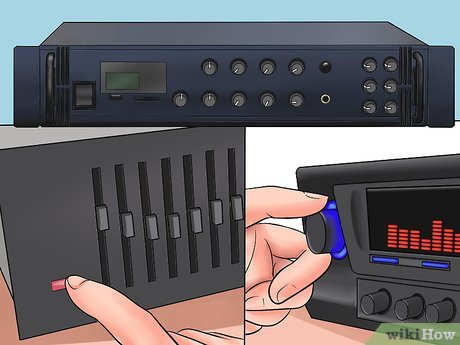
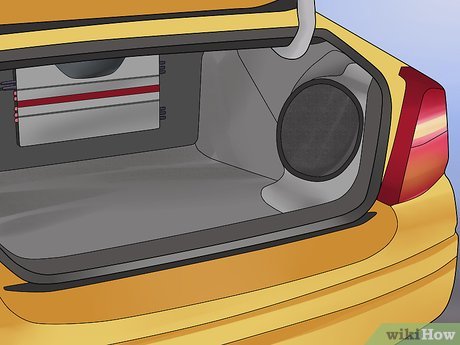
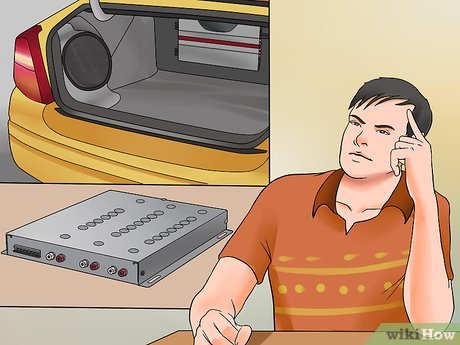
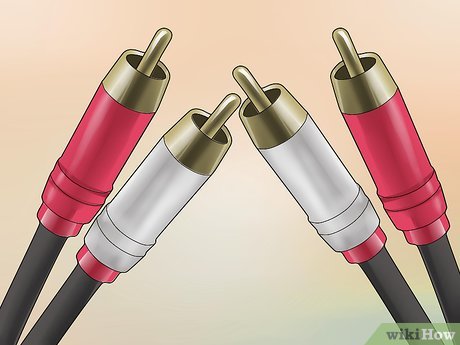
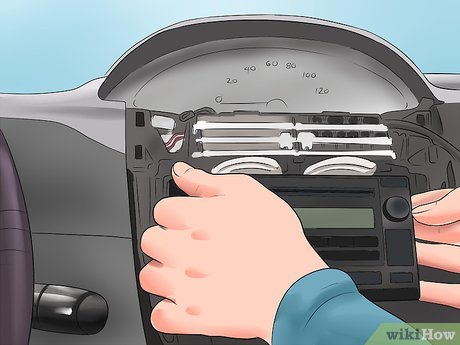
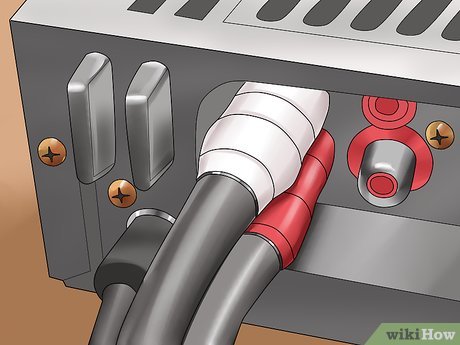
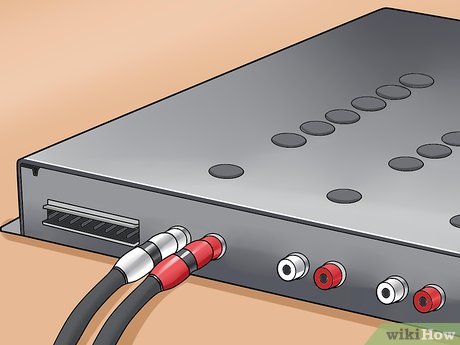
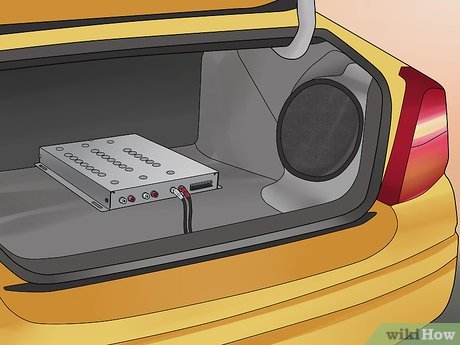
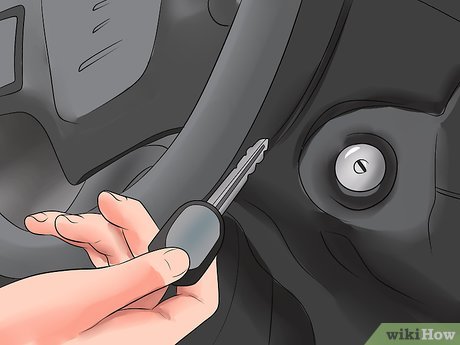
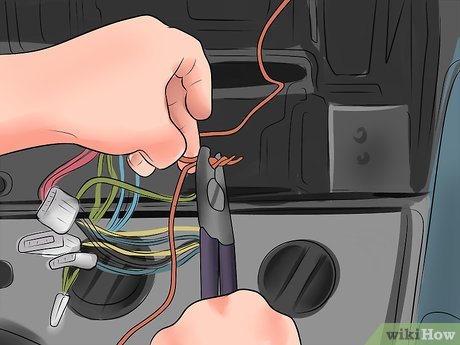
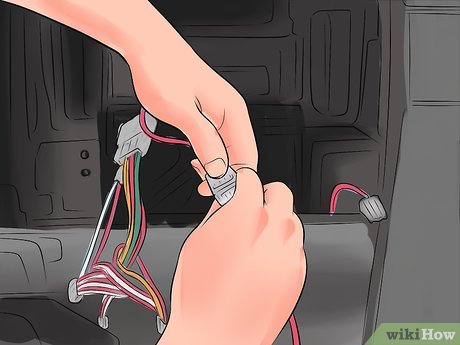
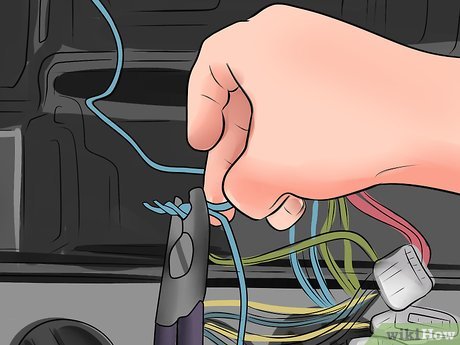
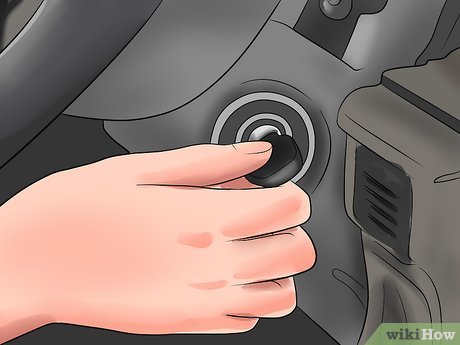
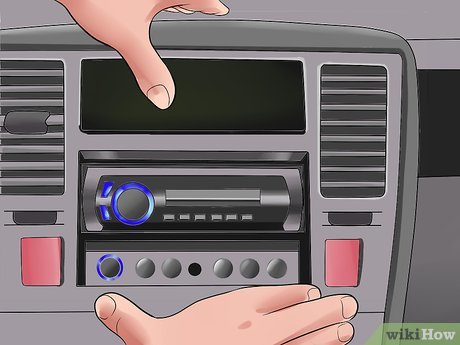
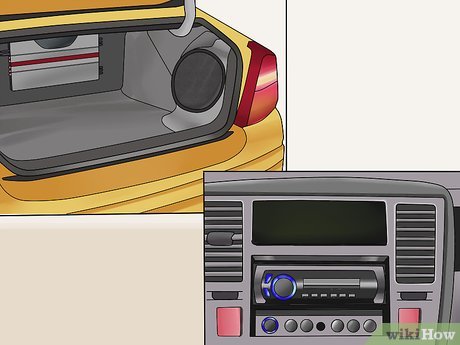
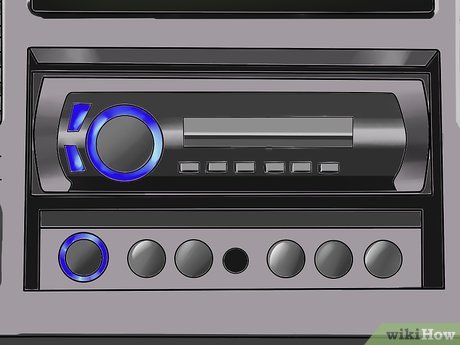
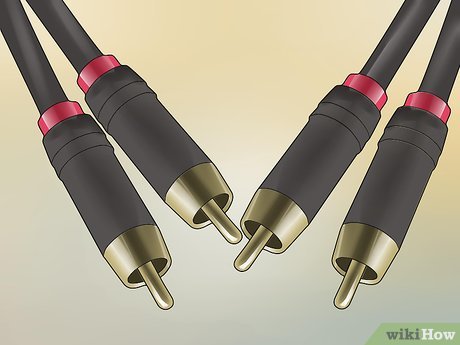
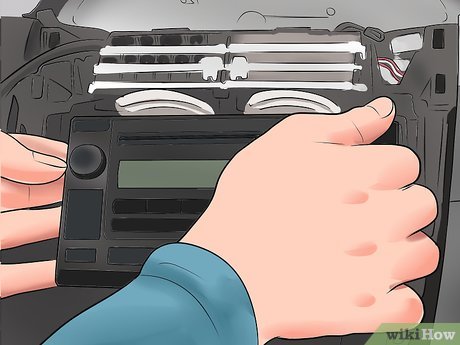
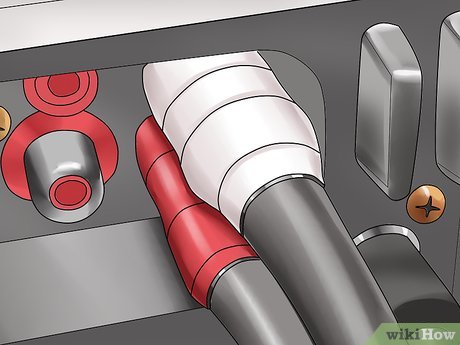
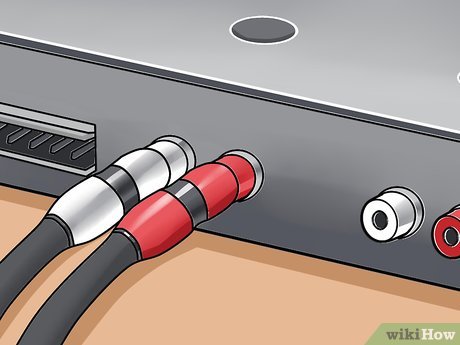
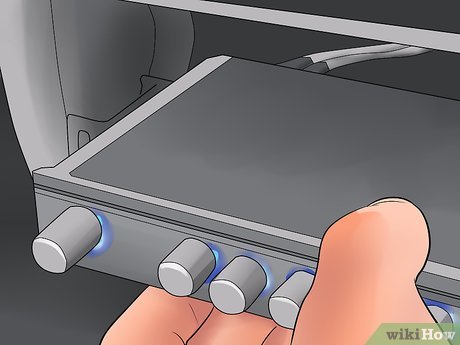
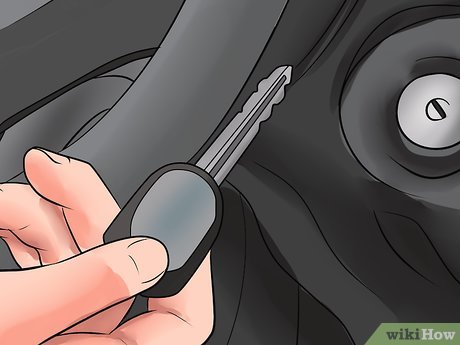
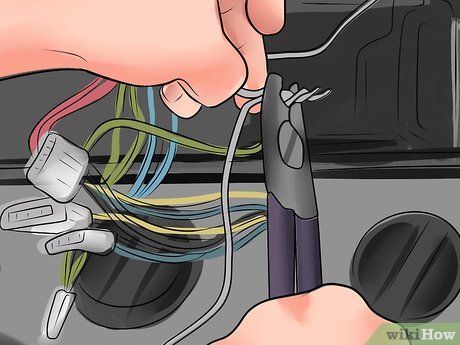
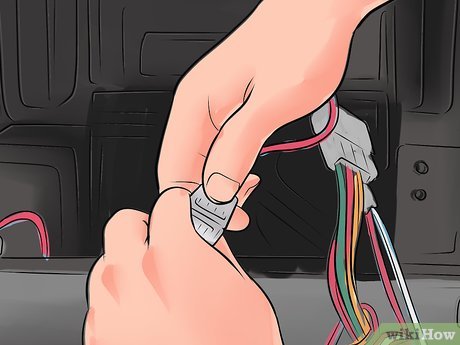
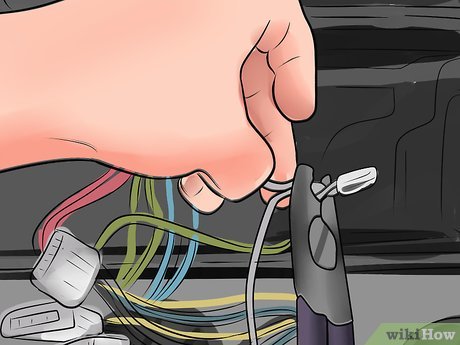
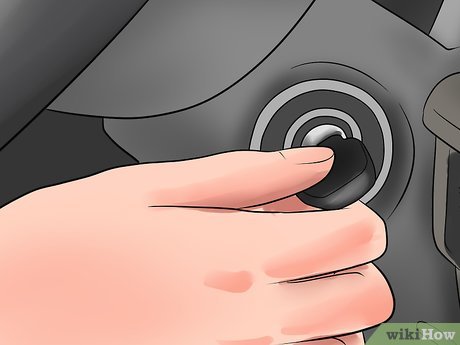
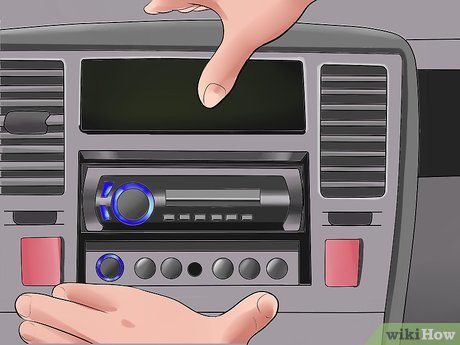










 How to Email Audio Files
How to Email Audio Files How to Use a Mixer
How to Use a Mixer How to Boost the Bass on Windows
How to Boost the Bass on Windows How to Play a CD on a Desktop Computer
How to Play a CD on a Desktop Computer How to Tell if Beats Are Fake
How to Tell if Beats Are Fake How to Import Sound Samples Onto FL Studio
How to Import Sound Samples Onto FL Studio